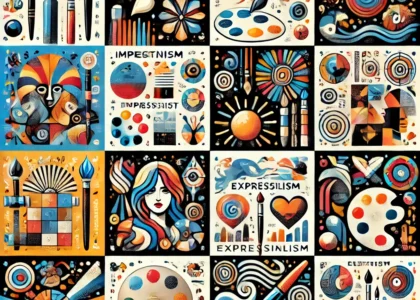Hello, art enthusiasts! I’m Tahseen, the creative force behind Tahseen’s Creativity, and today, I’d like to explore a topic that’s close to my heart: the profound impact of texture art in contemporary art spaces. Texture art is a dynamic and tactile form of expression that has gained significant popularity in recent years, and for good reason. It brings a whole new dimension to visual art, transforming the way we experience and interact with art pieces.
What Is Texture Art?
Texture art goes beyond the flat, two-dimensional surfaces of traditional painting. It involves the use of various materials and techniques to create a textured surface that can be seen and felt. This could include layering paint, incorporating mixed media, or using unconventional materials like fabric, sand, or even found objects. The result is a piece of art that is rich in depth, dimension, and visual interest.
In my work, I often experiment with different textures to evoke certain feelings or to draw the viewer into a more immersive experience. The tactile nature of texture art invites people not just to view the artwork but to engage with it on a more intimate level.
The Emotional Impact of Texture
One of the most compelling aspects of texture art is its ability to evoke emotions and create a sensory experience. The way a textured surface catches the light, casts shadows, or invites touch can deeply affect how a piece of art is perceived. Texture can convey roughness, softness, chaos, or calm, each adding layers of meaning to the artwork.
For instance, in one of my texture art pieces, I used thick, swirling layers of paint to create a sense of movement and energy. Viewers have often commented on how the piece seems alive, almost as if the colors and textures are in constant motion. This tactile quality allows the art to resonate on a deeper emotional level, making it more impactful and memorable.
Texture Art in Contemporary Spaces
In contemporary art spaces, texture art plays a pivotal role in transforming environments. These spaces often embrace modern, minimalist designs, and a textured piece of art can add a striking contrast to clean, smooth surfaces. Texture art can serve as a focal point, drawing attention and inviting viewers to explore its intricacies.
One of the exciting aspects of texture art is its versatility. It can complement various styles and settings, from sleek, industrial lofts to cozy, eclectic homes. In a minimalist space, a textured artwork can break the monotony and add warmth and character. In more vibrant environments, it can enhance the overall aesthetic by adding layers of complexity and interest.
In one of my recent projects, I created a large textured piece for a contemporary gallery space. The gallery had a very modern, almost stark design, and the textured art added a layer of richness and depth that balanced the space beautifully. The tactile quality of the artwork invited visitors to engage with it more closely, making the gallery experience more interactive and memorable.
The Appeal of Imperfection
Texture art often celebrates imperfection and the beauty of the handmade. In a world where digital precision and smooth finishes dominate, texture art offers a refreshing departure. The irregularities, the raw edges, and the visible brushstrokes remind us of the human touch behind the creation. This appeal to authenticity and craftsmanship is a significant reason why texture art resonates so strongly in contemporary spaces.
I find great joy in the unpredictability of texture art. Each layer of material or paint adds a unique element to the piece, and no two creations are ever the same. This element of surprise and the organic development of the artwork contribute to its uniqueness and charm.
Engaging the Senses
One of the most rewarding aspects of creating texture art is seeing how it engages the senses of those who experience it. Unlike traditional flat paintings, textured pieces invite viewers to not only look but also to reach out and touch. This multi-sensory engagement makes texture art particularly impactful in contemporary spaces where viewers seek a more immersive and interactive experience.
In my exhibitions, I often notice how people are drawn to textured pieces, lingering longer as they explore the surface with their eyes and, when allowed, their hands. This sensory interaction creates a stronger connection between the viewer and the artwork, making the experience more personal and memorable.
Final Thoughts
Texture art is more than just a visual experience; it’s a tactile journey that adds depth, emotion, and dimension to contemporary art spaces. Whether it’s the roughness of a thickly applied layer of paint or the subtle texture of mixed media, these elements bring art to life in ways that flat surfaces simply cannot.
At Tahseen’s Creativity, I am passionate about exploring the possibilities of texture art and how it can transform spaces and evoke emotions. Whether you’re an art lover, a collector, or someone looking to add a unique piece to your home or gallery, I invite you to explore the world of texture art and experience its impact for yourself.
Thank you for joining me on this exploration of texture art in contemporary spaces. I hope you find inspiration in these ideas and consider how texture can play a role in your own creative journey.
Tahseen
Founder & Artist, Tahseen’s Creativity

